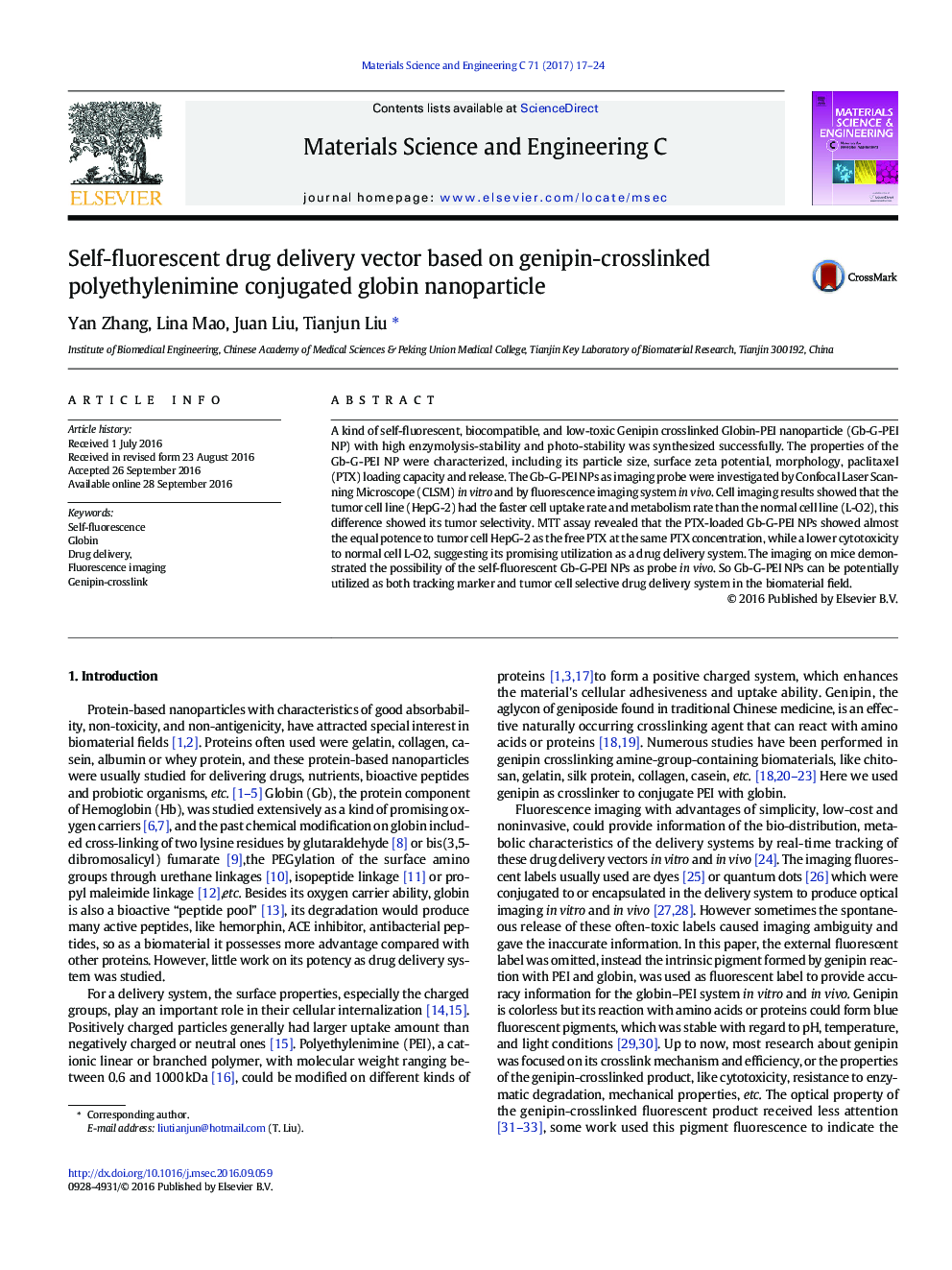| Article ID | Journal | Published Year | Pages | File Type |
|---|---|---|---|---|
| 5434601 | Materials Science and Engineering: C | 2017 | 8 Pages |
â¢Hemoglobin, an endogenous peptide pool, fabricated as the drug carrier with good biocompatibility was reported first time.â¢The Genipin-crosslinked globin and PEI nanoparticles as drug delivery system had tumor cell line selectivity.â¢Genipin-crosslinked globin and PEI nanoparticles had high photo-stable and enzymolysis-stable self-fluorescence.â¢This self-fluorescence could be imaged both in vitro and in vivo.
A kind of self-fluorescent, biocompatible, and low-toxic Genipin crosslinked Globin-PEI nanoparticle (Gb-G-PEI NP) with high enzymolysis-stability and photo-stability was synthesized successfully. The properties of the Gb-G-PEI NP were characterized, including its particle size, surface zeta potential, morphology, paclitaxel (PTX) loading capacity and release. The Gb-G-PEI NPs as imaging probe were investigated by Confocal Laser Scanning Microscope (CLSM) in vitro and by fluorescence imaging system in vivo. Cell imaging results showed that the tumor cell line (HepG-2) had the faster cell uptake rate and metabolism rate than the normal cell line (L-O2), this difference showed its tumor selectivity. MTT assay revealed that the PTX-loaded Gb-G-PEI NPs showed almost the equal potence to tumor cell HepG-2 as the free PTX at the same PTX concentration, while a lower cytotoxicity to normal cell L-O2, suggesting its promising utilization as a drug delivery system. The imaging on mice demonstrated the possibility of the self-fluorescent Gb-G-PEI NPs as probe in vivo. So Gb-G-PEI NPs can be potentially utilized as both tracking marker and tumor cell selective drug delivery system in the biomaterial field.
Graphical abstractBased on globin and PEI, a kind of self-fluorescent and biocompatible é£ was synthesized in high yield. Given its photo-stable and enzymolysis-stable self-fluorescence, the nanoparticles fabricated in this work could play the role as an intracellular bio-imaging marker without external fluorescent probe. Its cellular uptake and metabolism rate in carcinoma cells (HepG-2) was faster than in the normal cells (L-O2), which applied its cell-selectivity. It could be used as a targeted drug delivery system.Download high-res image (365KB)Download full-size image
